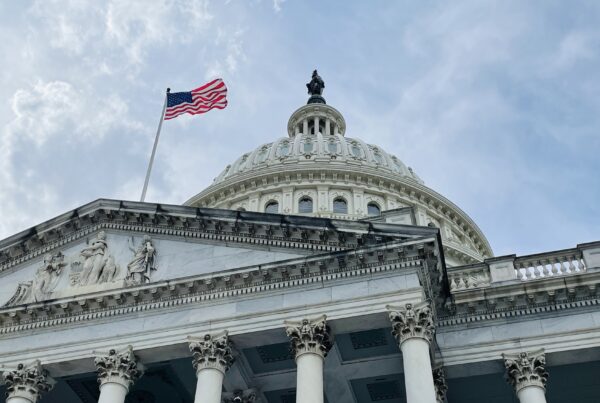In the wake of the U.S. Supreme Court’s 2018 decision in Wayfair, every state that imposes a general sales tax (with the exception of Florida and Missouri) now requires remote sellers to administer sales tax on sales shipped to customers in the destination state, provided that the remote seller has economic nexus in the state. Many remote sellers have complied with the post-Wayfair regulations by beginning to collect and remit sales taxes in states where they ship goods.
However, some remote sellers are being caught off guard by California sales tax notices and assessments that are being issued for pre-Wayfair periods. California in particular has identified these remote sellers based on their use of Amazon’s “Fulfillment by Amazon” (FBA) service. With FBA, Amazon says to “leave the shipping, returns, and customer service to us.” What remote sellers may not be aware of is the location(s) where Amazon may be warehousing the remote seller’s inventory. Some California state tax officials maintain that the in-state presence of inventory – even if held by a third-party – constitutes a sufficient in-state presence that triggers nexus.
Physical Nexus
For over half a century, physical presence was required to establish sufficient nexus, or a connection, between a state and a retailer for sales tax purposes. However, the Supreme Court reversed its previous decisions in Quill (1992) and National Bellas Hess (1967) with its Wayfair decision. Wayfair paved the way for another activity to establish a sufficient connection – economic nexus, which is determined based on either a sales volume or sales transaction threshold. It’s important to note that Wayfair did not replace the physical presence standard with economic nexus. Rather, it created an additional test for determining whether an out-of-state seller has nexus in a state. Even with economic nexus provisions in place, states are continuing to pursue sellers that performed other nexus-creating activities within their jurisdiction for periods prior to Wayfair.
As previously mentioned, California is pursuing back sales tax from remote sellers with “inventory nexus.” California has issued notices and assessments based on marketplaces, like Amazon, having possession of the remote seller’s inventory in California. The remote sellers, perhaps unknowingly, had physical presence in California based on their inventory being located in California.
The concept of “inventory nexus” is controversial. On one hand, the remote seller owns inventory in a state. The in-state physical presence of inventory likely created substantial nexus under the Commerce Clauses of the U.S. Constitution under the pre-Wayfair rules. However, the fact that the inventory is placed by a facilitator could invoke limits to state taxation under the Due Process Clause. On the other hand, some argue that California’s position on inventory nexus is wrong. Due to Amazon’s degree of control over the seller’s goods, the relationship is viewed as being similar to that of a consignment store, which means that Amazon is the de facto retailer for sales tax purposes and Amazon (not the remote seller) should receive the sales tax notices.
For now, however, remote marketplace sellers that sold through platforms like Amazon for periods before California’s marketplace facilitator laws became effective on October 1, 2019, should evaluate whether they may have had “inventory nexus” in California and in any other states. If so, the remote seller should consult with an advisor to determine the next course of action to hedge off any unexpected notices and assessments. There are various ways that taxpayers can mitigate past tax exposures, such as though Voluntary Disclosure Agreements and amnesty programs, the specifics of which vary by state.
Other Methods of Discovery
Even in this post-Wayfair world of economic nexus provisions, physical presence continues to create nexus for sellers. Because of this, state agencies are finding creative solutions to discover out-of-state sellers that currently have, or had, physical presence in their state.
For example, states are actively working with the U.S. Customs Department to identify foreign commerce transactions coming into the states. Similarly, at least one state is working with their local Highway Patrol commercial vehicle inspection facilities to identify the delivery of goods through interstate commerce. Both of these agencies, in their normal course of business, have access to vendors’ shipping manifests or bills of lading that will identify the customer, delivery location, quantity of goods and their insured value of the property entering in the state.
In addition to monitoring interstate and foreign commerce, the Federation of Tax Administrators has a working “Exchange of Information Agreement” in place, which provides a mechanism for state and local taxing agencies to exchange confidential information for the purpose of administering and enforcing their tax laws. This information sharing includes, but is not limited to, nexus information and questionnaires, tax returns and supporting workpapers, audit reports, and revenue-estimating materials.
If a seller did have some form of physical presence nexus in a state, and that seller did not file and pay sales taxes owed, then there typically is not a statute of limitations to prevent the state from assessing taxes back to when the seller first established nexus. As a result, out-of-state sellers could have large sales tax liabilities that they are not aware of because they have only been focused on complying with the economic nexus provisions ever since the Supreme Court issued the Wayfair decision in June 2018.
In order to avoid unexpected notices and assessments, it is imperative that sellers and their advisors review the seller’s activities performed in a state, for both past and present tax periods. If potential exposures are uncovered, a plan of action to get the seller into compliance will need to be put in place before a state discovers the seller. After all, once a state identifies that a seller has a sales tax obligation in the state and issues a notice, the seller is no longer eligible to participate in a Voluntary Disclosure Agreement or an amnesty program in order to limit lookback periods and any penalties associated with the delinquent sales tax.
WG Insights
- When evaluating whether a seller has nexus in a state, it is not enough to review only whether the seller exceeded a state’s economic nexus thresholds. Physical presence activities did, and will continue to, create nexus for unsuspecting sellers.
- Retailers and their advisors need to continue to delve into the retailers’ activities or fact patterns to determine whether they have a sufficient connection to the state to constitute nexus.
- Retailers cannot focus only on current and future sales to determine their sales tax nexus footprints. States are attempting to collect unpaid sales tax from sellers that had some form of physical presence in the state for tax periods prior to Wayfair.
- Retailers and their advisors should review previous tax periods for outstanding sales tax liabilities and determine whether remediation efforts are required, such as Voluntary Disclosure Agreements, amnesty programs, etc.




